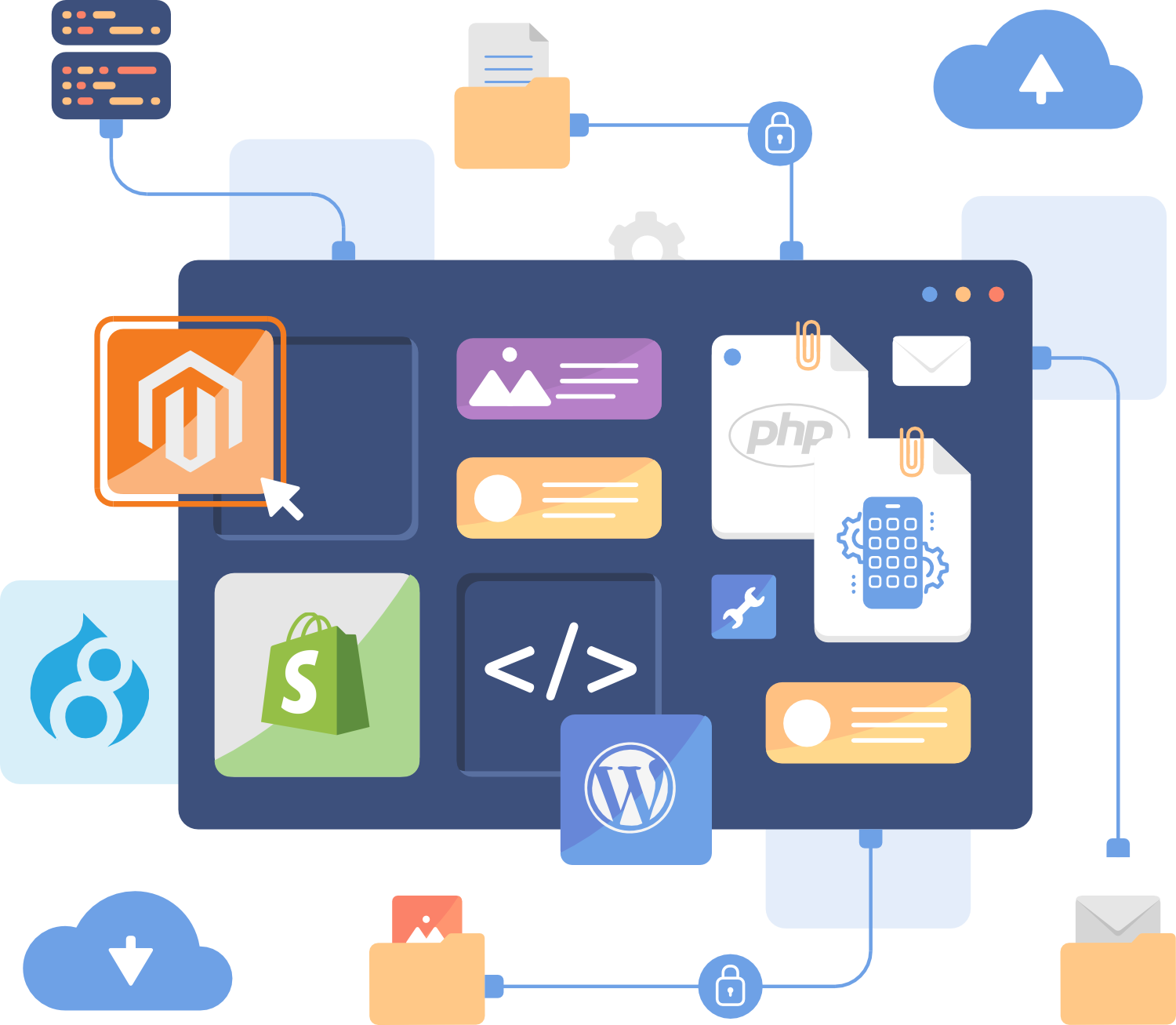
FutureSoft India is a software company since 1988 and is serving many prestigious clients across the country. We diversified into web development services almost a decade ago.
FutureSoft India has a team of talented experts who are passionate about their work and have created several customized web development solutions for our esteemed customers. Web Development Services or web development is very popular nowadays among web professionals. Web development refers to the main non design aspects of websites creation. It also contains writing mark up and coding. Of late the meaning of web development is the creation of content management systems which is popularly called CMS.
We study the customer’s requirement in depth and then provide the solution using the best search engine programming language to ensure the website will be easily found on the net. All our projects undergo rigorous testing and quality assurance to ensure smooth functioning on all the mediums (desktop, tablet & mobile). Our delivery team consistently remains in touch with the customers IT Team and updates them of the progress keeping the focus on the deliverables and the delivery schedule.
Our Expertise
-
 Magento
Magento
-
 Shopify
Shopify
-
 Dot Net
Dot Net
-
 Mobile App
Mobile App
-
 Drupal
Drupal
-
 Objective C
Objective C
-
 WordPress Development
WordPress Development
-
 Custom PHP Web App
Custom PHP Web App
Development Features
-
 Custom Web Development
Custom Web Development
-
 eCommerce Platform
eCommerce Platform
-
 Shopping Cart Web Development
Shopping Cart Web Development
-
 Blog Development
Blog Development
-
 Analytics and Tracking Code
Analytics and Tracking Code
-
 API Implementation
API Implementation
-
 Mobile Site & App Development
Mobile Site & App Development
-
 Regular Website Maintenance
Regular Website Maintenance
Industry We Serve
-
 Healthcare
Healthcare
-
 Real Estate
Real Estate
-
 Banking Financial
Banking Financial
-
 B2B
B2B
-
 B2C
B2C
-
 Utilities
Utilities
-
 Sanitary Ware
Sanitary Ware
-
 Retail
Retail
-
 Non Profit
Non Profit
-
 Associations
Associations
Website Development Life Cycle

Details for each step mentioned below:
Step 1- Gathering Information: Purpose, Main Goals, and Target AudienceThis is the most important stage where we discover, research and determine how the subsequent steps will look like. At this step, we need to get the clear understanding of the website purpose, the main goals and the target audience for whom this website is going to be created.
News portals differ from social portals or entertainment portals. Adults and teenagers think differently so we need to keep their thoughts and wish list in mind while creating the website.
Detailed insight at this step saves time and cost thereby ensuring our success and satisfaction.
Step 2 - Planning: Sitemap and Wireframe CreationAt this, the developer creates the data and shares with the customer as to how the website will look like. On the basis of the information and material gathered in the first step, the sitemap is created.
The sitemap described the relations between the main areas of the proposed website. This helps in better understanding about the final image and utility of the website.
The sitemap allows understanding how the inner structure of the website will look like but doesn’t describe the user interface.
Sometimes before the developer starts the design or coding it becomes necessary to obtain the approval from the customer so that there are better understanding and no wastage of effort and money.
A wireframe is a visual representation of user interface that we are going to create.
This wireframe doesn’t contain any design elements such as colors and logos.
Step 3 - Design: Page Layouts, Review, and Approval CycleThis is a very critical phase as our website takes shape. All the visual content such as images, photos and videos are created at this step.
All the information and material gathered in the first step are crucial now and should be handy.
We need to keep the customer requirements and target audience in mind while working on the design.
The website layout is the designer’s baby, entirely his imagination and thoughts put into action.
The basic function of this website layout is to represent the information structure, content visualization, and basic layout.
Layouts contain colors, logos, images and give a general understanding of the proposed website.
Step 4 - Content Writing and AssemblyContent writing and compiling is a very important aspect of website creation and this overlaps with all other stages. This step is critical as it is this step where we can communicate to the target audience.
Content writing involves many steps such as:
- Creation of catchy headlines
- New text creation
- Text editing
- Compiling the required materials
Generally the customer provides the website content and the website developer reviews and migrates the content to the website along with the coding.
Step 5 - CodingAt this step the developer finally starts creating the website. Graphics and other content material designed during the previous stages is now assembled and uploaded to the website.
The developer first creates the Home page and then adds all the subpages according to the website hierarchy that was created in the form of a sitemap.
Special focus is on the framework and CMS so that the server can handle the installation smoothly.
All the static web pages created earlier are now tested and added to the website.
While using CMS for website creation we need to install CMS plugins if required.
Besides this, the other main important step is SEO (Search engine optimization).
SEO can help our website achieve higher rankings in the search engines.
A valid code is very important for SEO.
Step 6 - Testing, Review and LaunchTesting is probably the most routine part of a process. Every single link should be tested to make sure that there are no broken ones among them.
We need to be very careful in this step and check every form, every script and also run a spell check software to fid possible typos.
Also, we should use code validators to ensure that our code follows the current web standards.
Valid code is also important for cross-browser compatibility.
At this stage, we also check and recheck our final website so that we can upload it on the FTP Server.
After uploading the website on the FTP server a final test is done to check the functionality of the website.
Step 7 - Maintenance: Opinion Monitoring and Regular UpdatingThis is the most critical phase of the activity. We need to remember that a website is more of a service than a product. Simply delivering the website to the user is not enough.
We need to ensure that everything is running fine as planned and demanded by the customer.
Customer satisfaction is paramount and we need to be ready to make any changes if required by the customer.
Feedback system added to the website will allow us to detect possible problems the end users may face. We need to fix any such problem on topmost priority.
We need to keep a check on the website with special focus on CMS as this will prevent our website from being attacked by bugs and decrease security risks.
